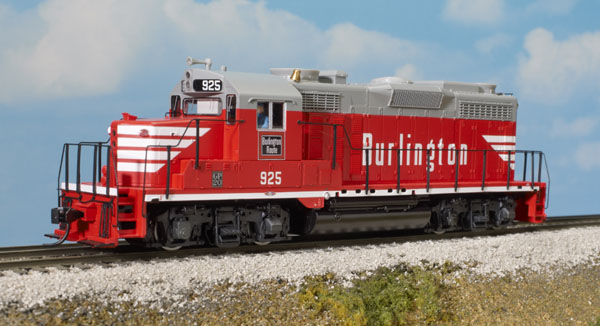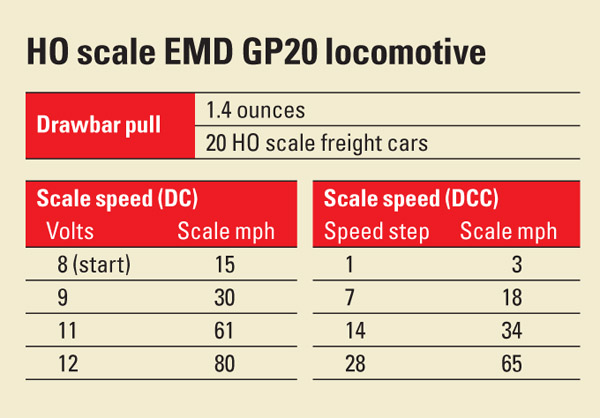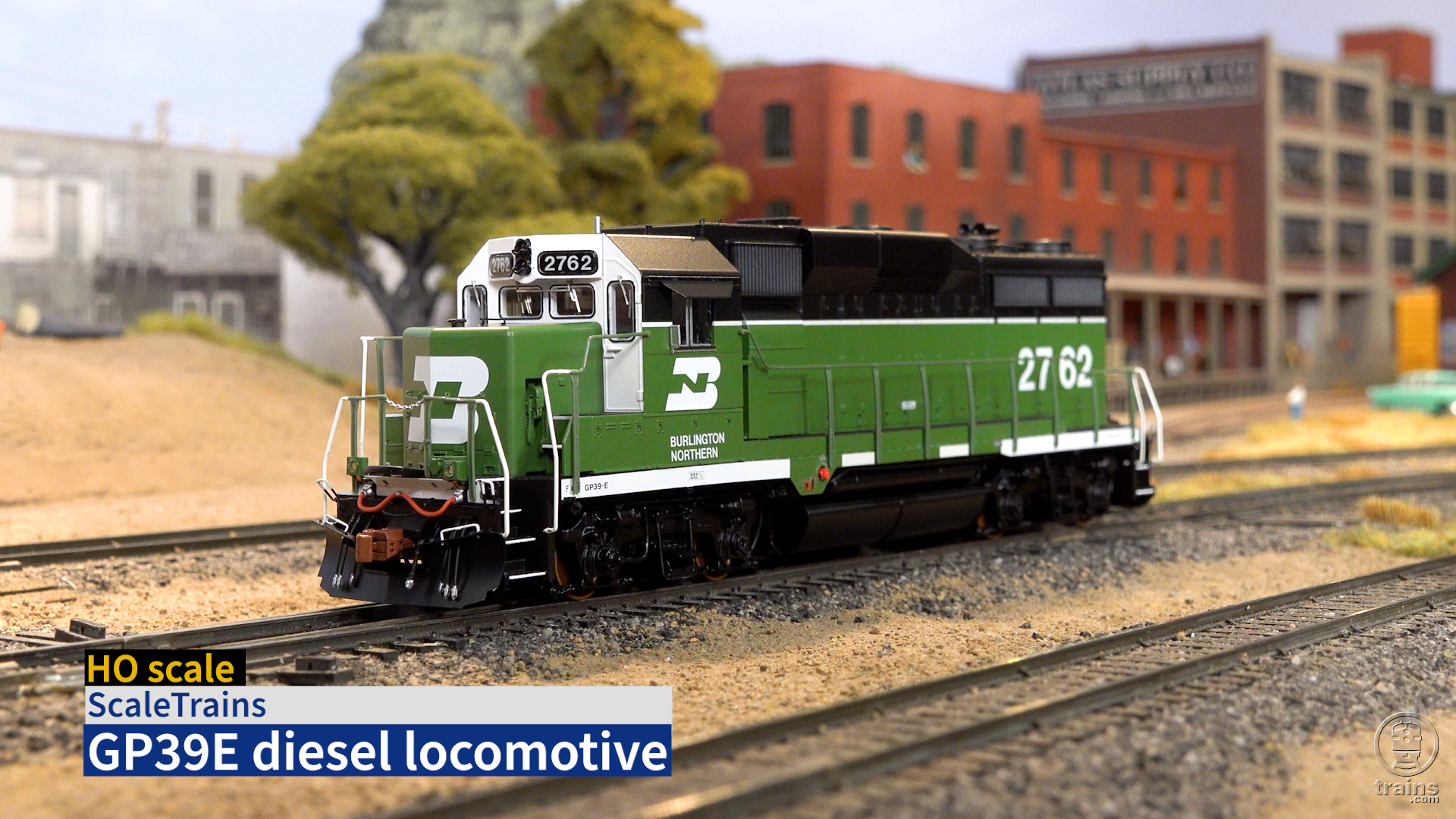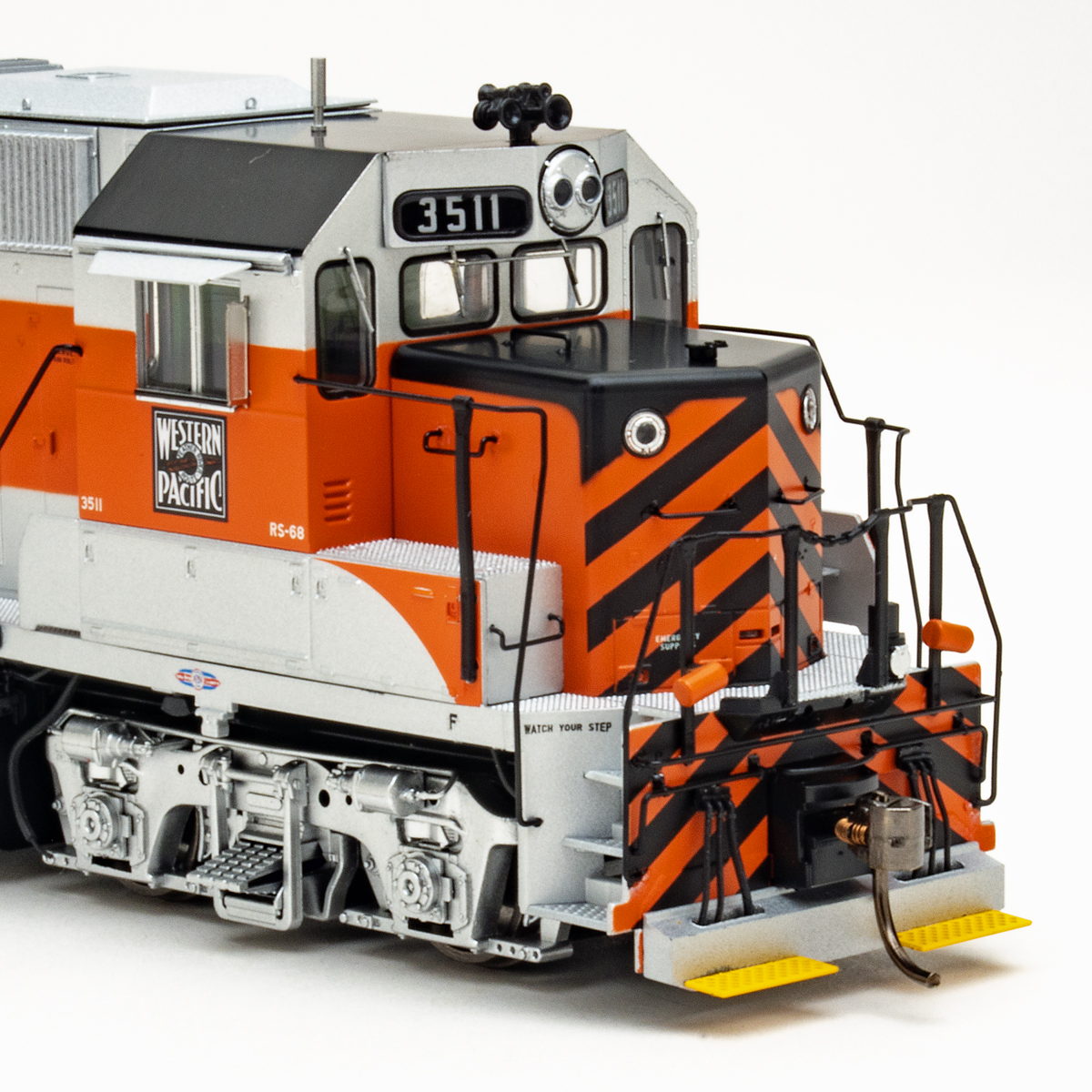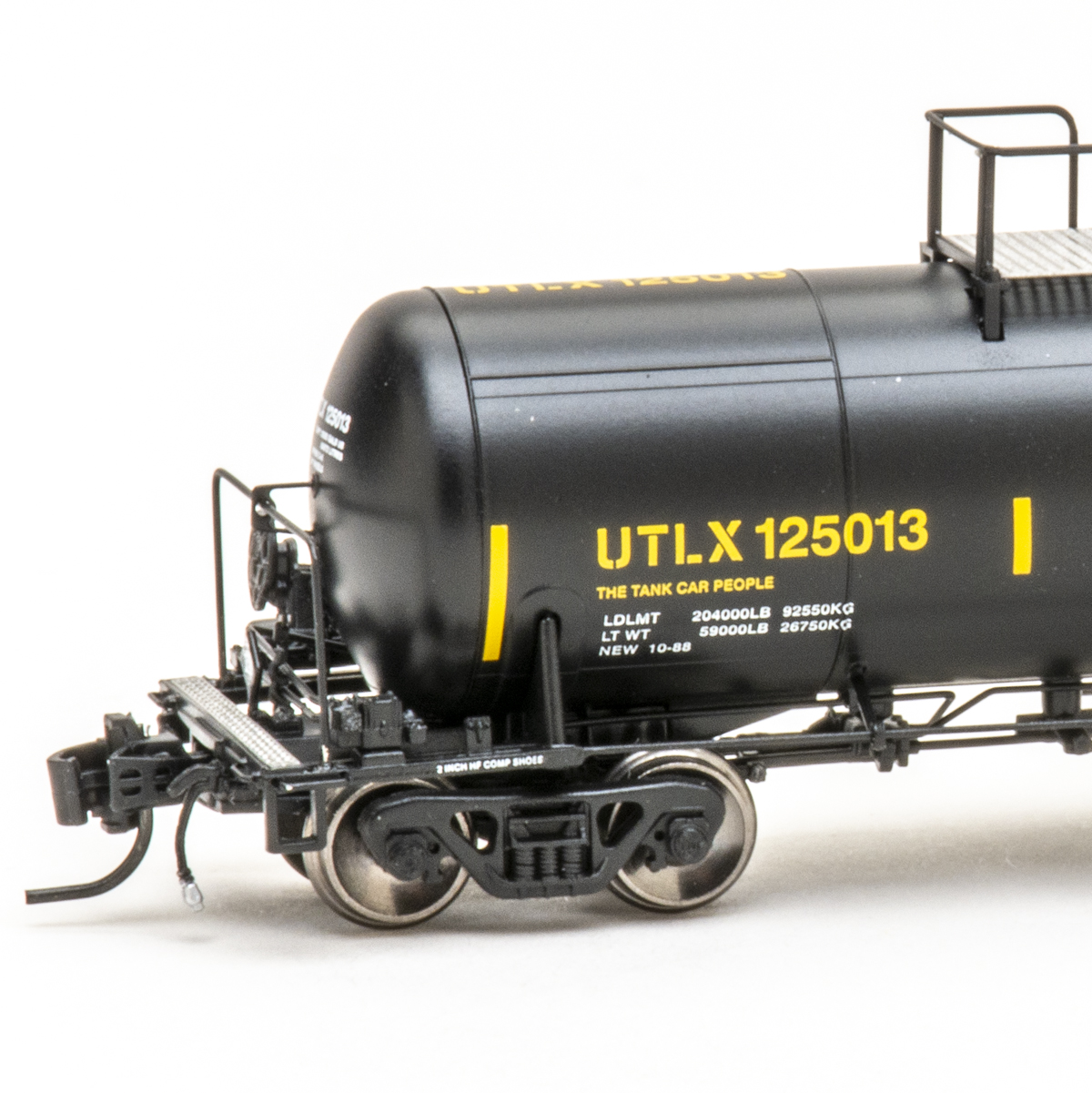The prototype. Introduced in 1959, the GP20 produced by General Motors’ Electro-Motive Division is credited as being the first of the “second-generation” diesels, the locomotives that replaced first-generation models such as the FT and F3. The GP20 was EMD’s first factory turbocharged unit. (In 1955 the Union Pacific’s Omaha shop began turbocharging some of the railroad’s GP9s).
The GP20 used the same 567D engine as the GP18, but the turbocharger added an extra 200 hp. Three 2,000-hp GP20s did the same work as four EMD F3s.
Electro-Motive built 260 GP20s between 1959 and 1962. All but 46 (36 for the Great Northern, 10 for the Western Pacific) had low short hoods. All but the 15 built for the New York Central had dynamic brakes.
The model. This model’s dimensions match prototype drawings in the Model Railroader Cyclopedia: Vol. 2, Diesel Locomotives. The engine-access hatches along the hood, grills, and other molded detail also match prototype photos.
A hallmark of WalthersProto (formerly Proto 2000) series models is roadname specific detail, and the GP20 keeps up that tradition. Our review sample is decorated as Chicago, Burlington & Quincy no. 925, one of 36 GP20s delivered to the railroad in 1961. The model depicts no. 925 early in her career. Separate details include the correct Leslie A-200 single-chime horn and a cab- mounted bell. Cab sunshades, wind deflectors, and all-weather windows are included as optional user-installed parts.
Other separate parts, such as the handrails, uncoupling levers, and m.u. hoses, are made of flexible plastic to
resist breaking. I appreciated that painted crew figures were installed in the cab.
The model is painted in Burlington’s striking Chinese red freight scheme. There’s sharp color separation, and all lettering is opaque and prototypically placed. The handrails and stanchions are correctly painted black.
As stated in the instructions, pulse- type DC power packs should be avoided when running any DCC-equipped locomotive on a DC layout. To confirm our test results, I ran the model with three different DC power packs, and the GP20 performed the same with each one.
As I applied 8 volts, the model moved forward at 15 scale mph. There was a slight but noticeable stutter to its movement that smoothed out as I applied more power. The decoder’s speed curve in DC rises sharply, as the model doubled its speed at 9 volts and accelerated to 80 scale mph at 12 volts.
I improved the locomotive’s DC performance by increasing its analog starting voltage using configuration variable (CV) 63 to a value of 50. The model then required 8.5 volts to start moving, but its slowest speed was now 8 scale mph. It also ran without any jerkiness.
Note that to adjust CVs requires a DCC system or a DC analog controller, such as a Model Rectifier Corp. Tech 6.
On our DCC test track the GP20 performed smoothly right out of the box, as you can see in the speed charts below. After I set the decoder speed steps to 128, the model crept along without any jerkiness at less than 1 scale mph.
The model’s performance can also be further refined on DCC. Using CVs you can add momentum for more realistic starts and stops, as well as choose between 14 preset speed tables. All the programmable features are outlined in the free user manual available at www.soundtraxx.com.
Sounds and lights. Running the GP20 on a DC layout, sounds are limited to the rumble of the diesel engine, squealing brakes during rapid deceleration, and a grade-crossing signal whenever the direction switch is flipped. Running the GP20 on a DCC layout really showcases the full potential of the SoundTraxx decoder.
The decoder accurately captures the whine of a turbocharged EMD 567. The rate at which the engine rpms increase is adjustable and includes a setting for manual notching, where the engine rpms can be increased independently of the model’s speed.
I also appreciate that the decoder allows the user to adjust the volume levels of each individual sound effect.
User-triggered functions include long and short horn blasts, bell, dynamic brake fans, and the coupler crash. The headlight can be dimmed, and the Gyralight can also be turned on and off.
The SoundTraxx decoder is a welcome addition for DCC fans. With or without DCC, the WalthersProto GP20 is an accurate, detail-laden model of a second-generation diesel pioneer.
Manufacturer
Wm. K. Walthers Inc.
P.O. Box 3039
Milwaukee, WI 53201
www.walthers.com
Era: 1962 to 1970s (as detailed)
Road names (multiple road numbers each): Chicago, Burlington & Quincy; Electro-Motive Division demonstrator; Norfolk Southern; St. Louis Southwestern (Cotton Belt)
Features
- All-wheel drive and electrical pickup
- Die-cast metal chassis
- Five-pole skew-wound motor with dual brass flywheels
- Metal RP-25 contour wheels in gauge
- Proto MAX metal operating
- knuckle couplers at correct height
- Roadname-specific details
- SoundTraxx DCC sound decoder (DCC version only)
- Weight: 13.6 ounces





